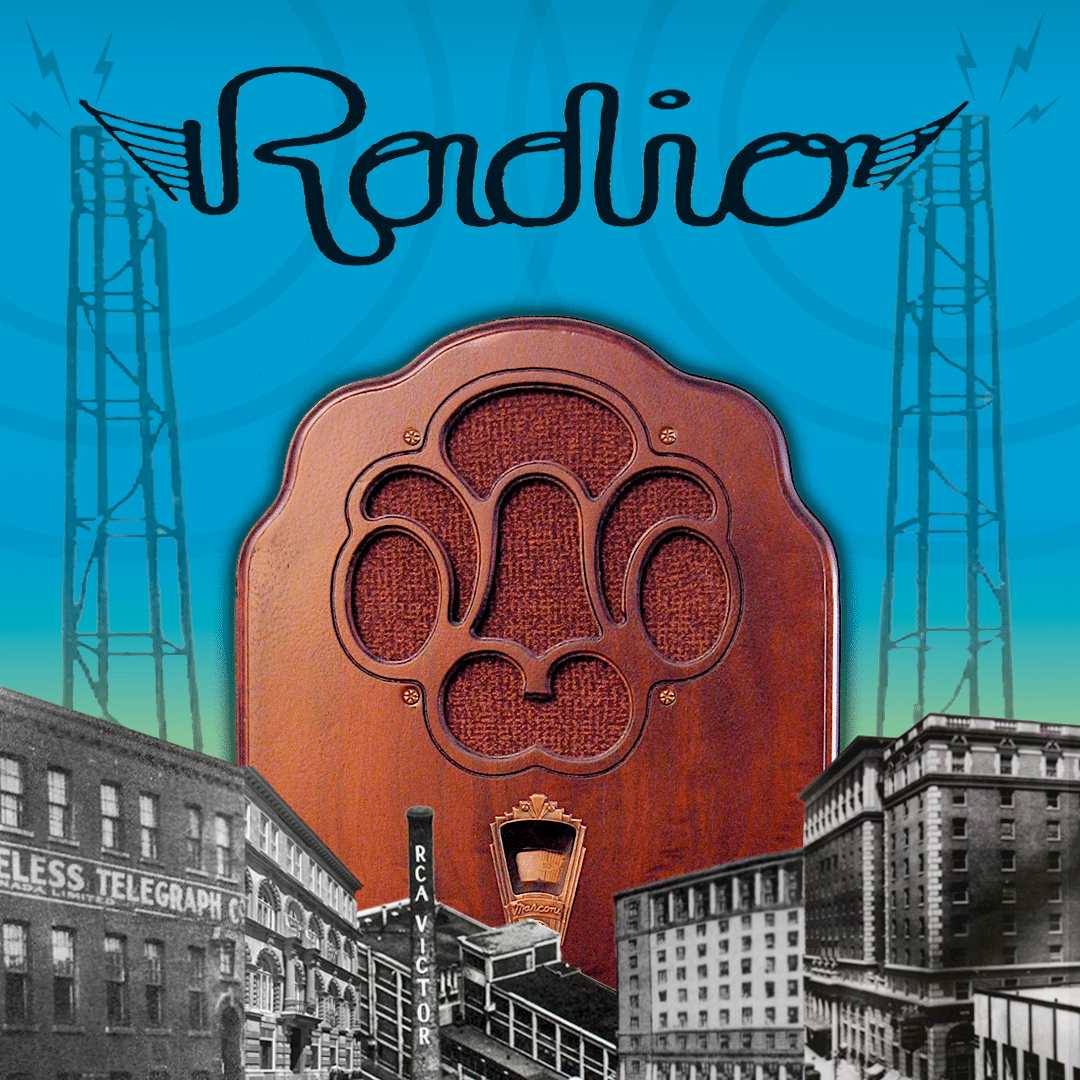2020 marks the 100th anniversary of broadcasting in Canada. The Musée des Ondes Emile Berliner and the Société Québécoise de Collectionneurs de Radios Anciens (Quebec Society for Vintage Radio Collectors) have joined forces with other organizations in the Montreal region to celebrate this event.
In Canada, XWA was the first station to produce programs. It was located on William St in Montreal, and began broadcasting experimentally in December 1919. In May 1920, at the annual meeting of the Royal Society of Canada in Ottawa the members had the opportunity to listen to speech and a brief recital transmitted from Montreal. This program was a first and the feat was featured on the front pages all of the newspapers of the time.
This exposition presents the pioneers of broadcasting and the first manufacturers of radio receivers in the Montreal region.

The first Montreal radio stations
In 1924, four Montreal stations would alternatively broadcast on the same frequency each week.
Here is a typical weekly radio program schedule that would transmit at 410 meters (730 KHz):
The first manufacturers
RCA Victor, Northern Electric, and Marconi are the most important. All three companies were located in the South-West borough of Montreal, then the industrial heart of Canada.
Established in Montreal at the beginning of the 20th century, the Marconi Wireless Telegraph Company occupied several buildings throughout its existence.
[1903 – 1913] The British Empire building (St-François and St-Jean)
[1909 – 1916] The DeLorimier and Sainte Catherine factory (Tansley Street)
[1916 – 1922] The factory and studio on William Street
[1914 – 1918] The Shaughnessy Building
[1919 – 1947] The Marconi Building at 211 St-Sacrement, subsequently occupied by Le Devoir
[1930 – 1994] The Marconi manufacturing plant on Trenton Street, Town of Mount-Royal
They began manufacturing radio receivers around 1921. The model C sold for as much as 195$ (approximately $3,000 today) because it included three modules: a tuner, a detector, and an audio amplifier.
Building your own radio receiver
In the 1920s, buying an electric radio receiver represented a significant expense. Crystal radios had been around since the early 1900s and those could be had for about $20, whereas amplified devices sold for $200, the equivalent of about $3,000 today. There were numerous amateurs who wanted to build their own radios. Businesses specializing in radio and electronics began to appear in Montreal, and plans and diagrams on radio building were published in newspapers and magazines of the time.
Even the daily newspaper La Presse published a series of 8 articles between December 11 and 19, 1922, explaining in full detail how to build one at home for $5 (the equivalent of about $75 today).
Many stores, like the Whitman Store, shown in this ad from La Presse in December 1922, provided the necessary parts described in the paper.
Here are some videos that show how to build your own crystal radio receiver.
Credits
Research and text: Alain Dufour
Research contributor: Ken Lyons
Translation: Emily Smith, Tim Hewlings
Page design: Mariana Mejía Ahrens
Coordination: Anja Borck
Sources
Pierre Pagé « Histoire de la radio au Québec : Information, Éducation, Culture » Montréal, Fides, 2007
Mary Vipond « Listening In: The First Decade of Canadian Broadcasting, 1922-1932 », McGill-Queens University Press, 1992
Centre d'histoire de Montréal
Ultra-Electronics TCS
Histoire de la radiodiffusion canadienne / History of Canadian Broadcasting




































